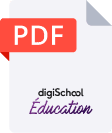Education novels are a well-established literary genre in English literature which specifically deal with a character’s evolution throughout their life. How does the depiction of education in novels serve an educational purpose?
I. Depicting education
1) Capturing the process of coming of age
Bildungsromans portray the coming of age of their protagonists. The History of Tom Jones, a Foundling, by Henry Fielding (1749), can be considered as a prototypical education novel. The protagonist’s story is told from his early childhood to adulthood and focuses on both the mystery of his origins and his romantic relationship with a young woman.
J.K. Rowling’s Harry Potter (1997-2007) constitutes a contemporary instance of the coming of age story. Hogwarts is used as a setting from Rowling’s imaginary wizarding world and mirrors the context in which British youngsters grow up today.
2) In quest of the self
The character’s evolution in education novels is often used as a way to explore human nature and the passage of time. In The Mill on the Floss by George Elliot (1860), the stories of two siblings are recounted over fifteen years, emphasizing the differences in their trajectories. Their psychological and intellectual development is touched on as their differing life choices enfold.
Info
George Elliot was a major 18th century novelist. Her work chiefly focuses on the development of young characters from the Midlands.
In Harper Lee’s To Kill a Mockingbird (1960), the two protagonists witness their father, a lawyer, defending a black man accused of rape. The atrocities surrounding this event participates in their moral development.
II. Educating the reader
1) The moral undertones of education novels
The use of symbols is one of the literary devices used for an educational purpose. Daniel Defoe’s Roxana, The Fortunate Mistress (1724) is a first person narrative in which a prostitute tells about how she came to sell her body. The novel focuses on her moral decay, brought about by society, feeding into the motif of the fallen woman.
Oliver Twist (1837), by Charles Dickens is the story of an orphan who has to grow up in the streets of a drab (morne), industrial London. Throughout the novel, Dickens makes extensive use of symbols, endowing some of the characters with biblical characteristics leading the reader to understand which characters are good and which are evil. Those symbols are often used to build upon the social commentary that is present throughout the novel.
2) Addressing the reader: for what purpose?
Narratorial comments are often used in education novels to explicitly make a moral comment in order to guide the reader. In Charlotte Brontë’s Jane Eyre (1847), the narrator addresses the reader directly in the famous line: “Reader, I married him”. By involving the reader in the novel, Brontë contributes to drawing them into the heroine’s moral dilemmas.
Through a complex set of authorial comments and weaving of the plot, Jane Austen’s Sense and Sensibility (1811) makes great use of didacticism and takes a moral stance against sensibility, a fashion of the late 18th century which involved overblown sensitivity and taste for the picturesque (pittoresque). Marianne, a character who embodies sensibility ends up realising that she was wrong in being driven only by her feelings and eventually decides to become more sensible.
Info
Didacticism is a type of literature whose aim is to educate and inform the reader in political, or often moral matters.
